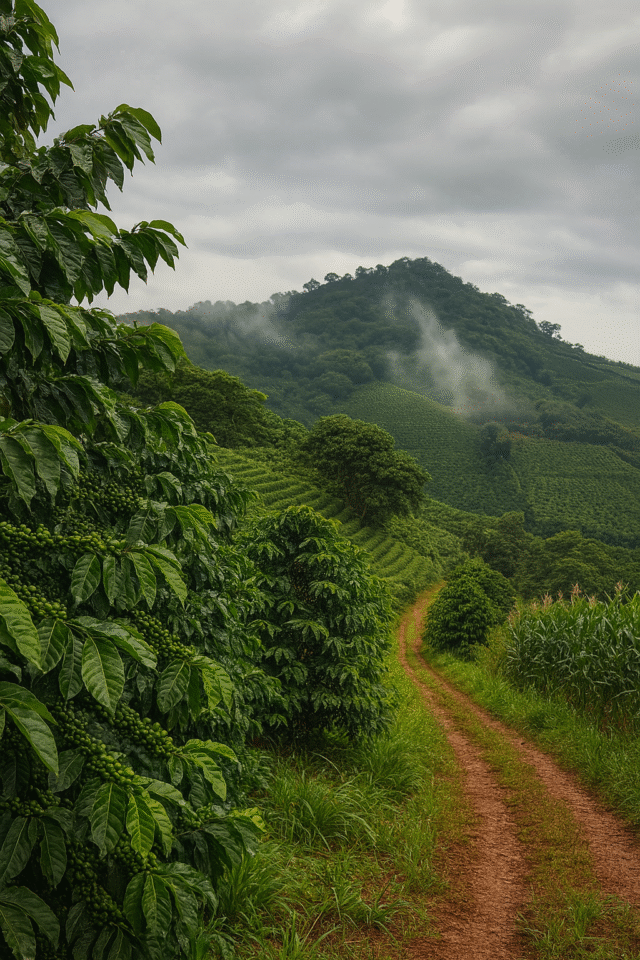Dubai, July 29, 2025 (Qahwa World) – Coffee prices surged this week amid ongoing weather disruptions, geopolitical tensions, and mounting concerns over global supply. As Brazil— the world’s largest coffee producer—progresses steadily with its 2025/26 harvest, the global market is showing signs of volatility that could influence prices in the coming months.
On Monday, September Arabica coffee futures (KCU25) rose by +1.39% (+4.15), while September Robusta futures (RMU25) jumped +4.03% (+130). The price rally was triggered by reports of a severe hailstorm in Minas Gerais, a key Arabica-producing region in Brazil, which may have caused crop damage. This development added to fears about supply disruptions from Brazil at a time when tariff risks are also weighing on sentiment.
According to Sucden Financial Ltd, the possibility of a 50% tariff on Brazilian goods, should no trade agreement be reached with the United States by this Friday, is raising alarms across the commodity markets. Coffee, as a critical Brazilian export, is especially vulnerable.
Adding fuel to the rally is speculative pressure in the Robusta market. ICE Futures Europe data shows funds increased their net-short positions by 3,334 contracts to a total of 4,628 as of July 22 — the highest in two years. Any short-covering could spark additional upward pressure on prices.
Steady Harvest Progress with High Quality
Despite the external pressures, Brazil’s coffee harvest is advancing smoothly. As of July 23, 84% of the overall 2025/26 crop had been harvested, including 96% of Robusta and 76% of Arabica, according to data from Safras & Mercado. The country’s largest cooperative, Cooxupé, reported 59% completion among its members by July 18.
Industry updates confirm that Robusta harvesting is nearly complete, with most volumes collected by the end of July, while Arabica harvesting is expected to conclude by late August. Even with this being one of the wettest harvests in recent memory, logistics have remained efficient, and bean quality is notably high.
Rain, Frost—and Resilience
Although rainfall reached 50mm in some Arabica regions and 30mm in Robusta zones, producers have reported no significant quality loss. In fact, bean size has improved over last year, and the average screen size is trending upward. Furthermore, light frosts in late June caused only minor localized impact, and early assessments suggest no long-term damage to trees.
Sustainability and Farmer Engagement
The 2025/26 season is also seeing increased attention to sustainable agriculture. Audits for Sucafina’s IMPACT sustainability program are ongoing across key regions including Cerrado, South Minas, Matas de Minas, Bahia, and Rondônia. IMPACT-verified coffees are expected to become available starting September/October 2025.
Meanwhile, over 200 farmers in Minas Gerais participated in the “Building Soil Health” training with EMATER-MG, focusing on regenerative practices. The strong turnout reflects growing farmer interest in sustainable methods and long-term soil health.
Exports, Inventories, and Global Forecasts
Recent export figures show a sharp decline, supporting bullish price sentiment. According to Cecafé, Brazil’s total green coffee exports in June fell -31% year-over-year to 2.3 million bags, with Arabica down -27% and Robusta down -42%.
On the inventory side, ICE-monitored Arabica stocks fell to a 3.25-month low of 800,326 bags, while Robusta inventories rose to a 1-year high of 7,029 lots, creating mixed signals across the two major varieties.
Globally, the USDA’s biannual report, released June 25, forecasts record global coffee production in 2025/26 at 178.68 million bags. This includes a -1.7% drop in Arabica output (to 97.02 million bags) and a +7.9% surge in Robusta production (to 81.65 million bags). Ending stocks are expected to grow by +4.9% to 22.82 million bags.
Despite this, Volcafe projects a global Arabica deficit of 8.5 million bags—wider than last season’s 5.5 million bag shortfall, marking the fifth consecutive annual deficit. These supply concerns continue to support firm prices, especially in the premium Arabica market.
Looking Ahead: Optimism for the 2026 Cycle
Looking beyond the current harvest, Brazil’s post-harvest vegetation is strong, signaling high production potential for the next crop cycle. Seedling demand has spiked, with nurseries reporting full sell-outs, a clear indicator of farmer confidence and investment in coffee expansion.
As the 2025/26 cycle nears completion, Brazil’s coffee sector appears resilient, innovative, and well-prepared to meet future demand—despite the turbulence of global markets.
